The Supermicro AOC-STG-b2T is a dual 10GbE adapter for those who need 10Gbase-T connectivity in a server. This is a quick one that continues our series on network adapter reviews. The “b” in the model name tells us that we have a Broadcom-based solution. Let us get into it.
Supermicro AOC-STG-b2T Hardware Overview
The card itself is a low-profile card. Supermicro offers both low-profile and full-height brackets. We had this installed in a full-height slot.
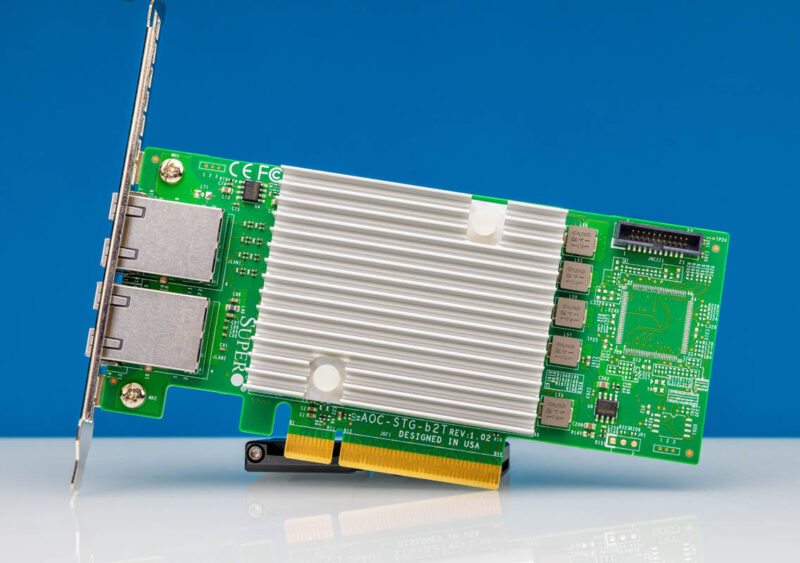
The card itself uses a PCIe Gen3 x8 connector. It was very common in several generations of Supermicro server lines to have a low-profile half-length x8 slot to customize networking.
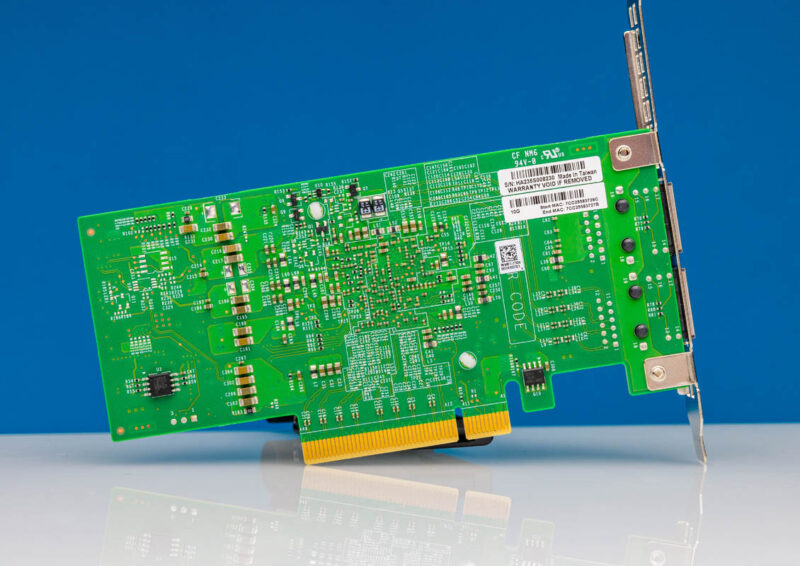
On the main I/O panel, we have two 10Gbase-T network ports. These also link at 1GbE speeds.
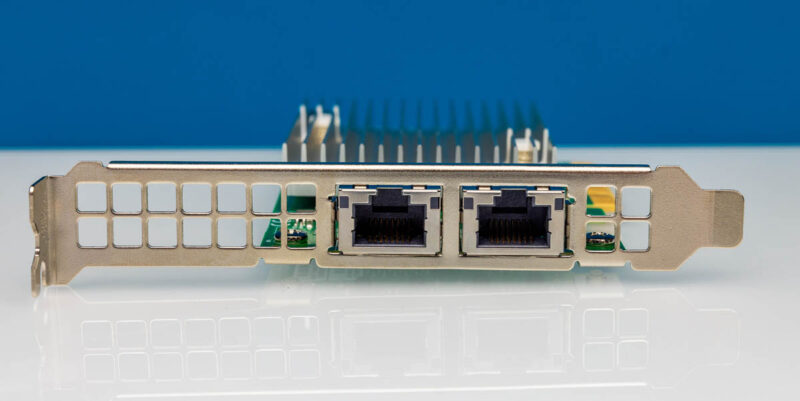
The heatsink is a passive unit, which is exactly what we want from a server NIC. It does require some airflow, albeit not a ton.
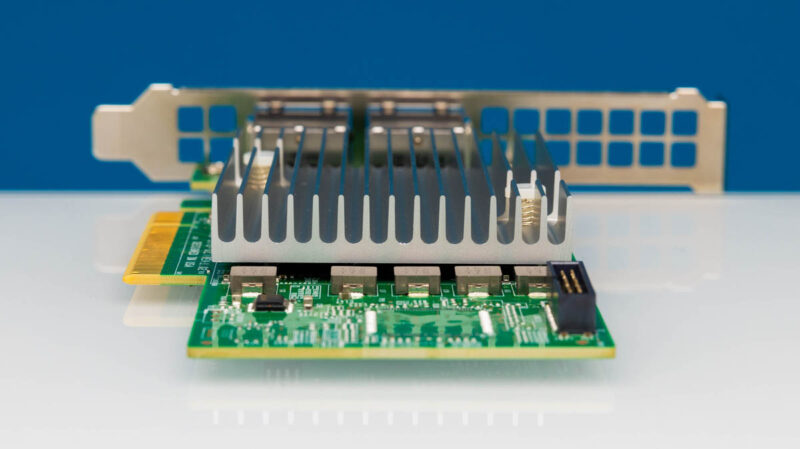
Underneath the large heatsink, we have a small Broadcom NetXtreme BCM57416 chip.
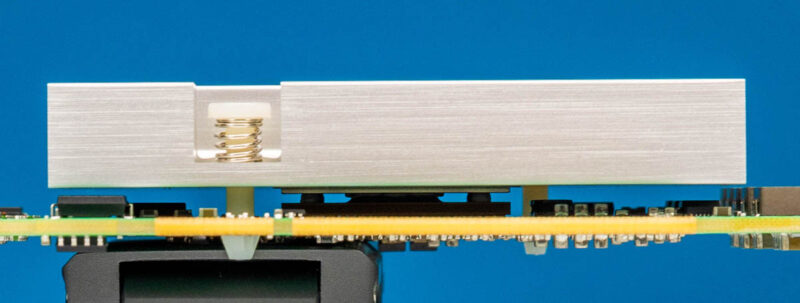
The Broadcom BCM57416 offers a lot of features like SR-IOV, offloads for VXLAN, NVGRE, and Geneve, NIC Partitioning (NPAR) with up to 16 physical functions, RoCE, and more. This is a step beyond some of the older generations of 10Gbase-T adapters.

Since this comes from a family of higher-end NICs, the supported speeds are 10GbE and 1GbE, but not 2.5GbE/ 5GbE.
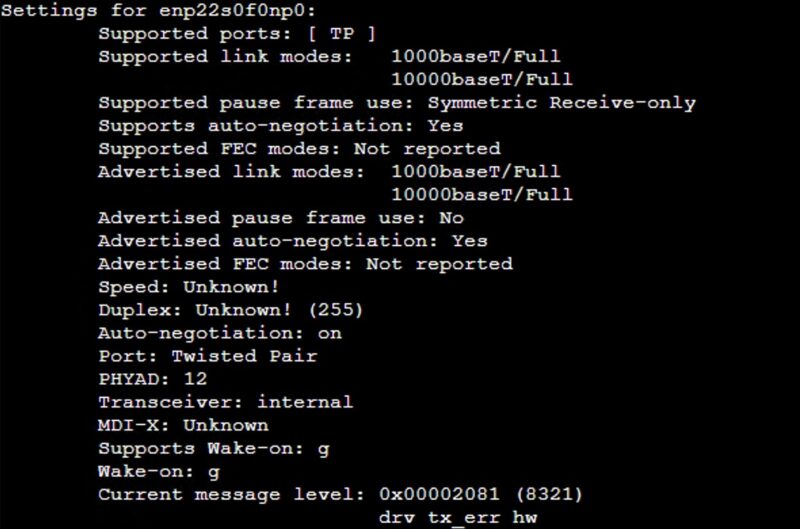
While the speeds were not advertised, we still tried to get the NIC to link at those speeds, but it did not. Again, that is expected. Next, let us get to the performance.
Supermicro AOC-STG-b2T Performance
Performance from the NIC is just as we would expect.
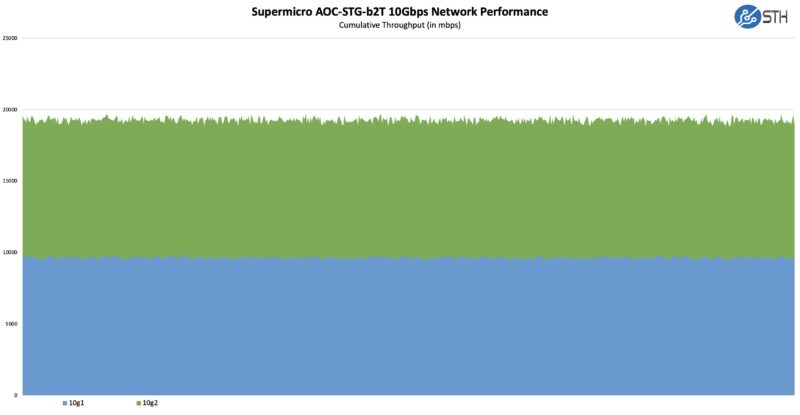
Since this was a PCIe Gen3 NIC, x8 lanes feel like more than it needs. It will be interesting to see if there are PCIe Gen5 re-spins of NICs like this since it can be handled by a single PCIe Gen5 lane. For a 13.1W max power card, this is better than a lot of older generation parts.
Final Words
Overall, the Supermicro AOC-STG-b2T is a dual 10Gbase-T NIC that can be useful in some deployments.
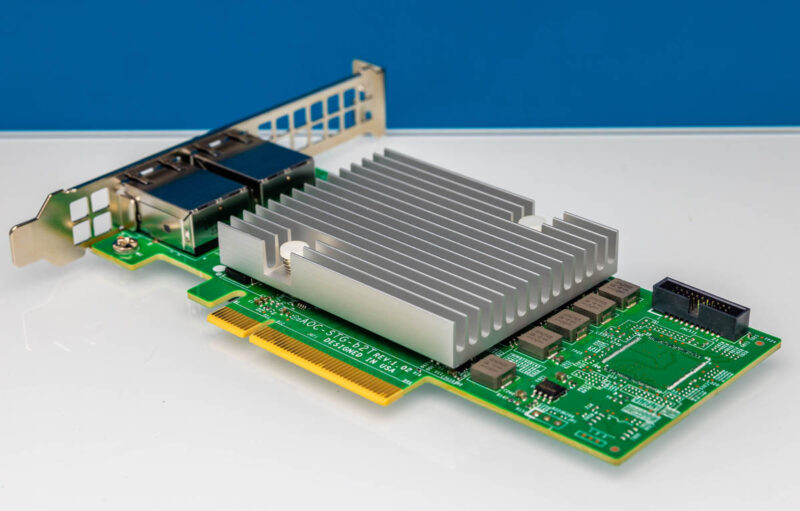
The Broadcom-based NIC has a lot of higher-end features that older NICs did not have like offloads for tunneling protocols and RoCE. On the other hand, it will be interesting to see how this, and other 10Gbase-T NICs are used. These days we are already on 400GbE NICs making a 10GbE NIC like using 1GbE when 40GbE was becoming popular. If you have a Supermicro server, this is an alternative to Intel NICs. While this may be less popular in the data center, it may be more useful in edge servers like the Supermicro SYS-110A-16C-RN10SP that we just reviewed.

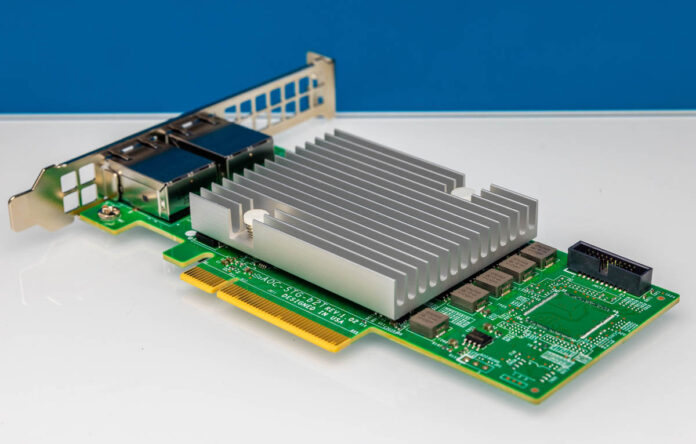



A bit barebones review. It should be mentioned that the card has integration compatibility with Supermicro BMCs for asset management, thermal management and fault detection. It can also be used as a shared NIC for the BMC since it supports NC-SI.
It’s the main reason for buying branded Supermicro NICs even tho their price is often higher than alternatives.
When you review any NICs, even if passive, please do include comments on the idle/load power consumption.
Especially for SOHO/lab use, but not only, that is a critical property.
A same-looking NIC like this can be absolutely fine operating at 4W in a low-airflow system, or it can be a high-low-only server SKU at 10W+. Impossible to tell just from the looks of it.
yes, yes, one can check the specs of the chip .. but still
In addition to idle/load power consumption, one feature that I nowadays always look at for any type of add-on card is Active-State Power Management (ASPM) support and whether lower CPU C-states are still supported. Would be nice to see this information in a NIC review on STH…
So done with Broadcom.
@Bastian I concur. One of my gripes with a lot of server add-on cards like HBAs and NICs is their lack of support for energy saving features like ASPM and short-reach mode. I realize that ASPM doesn’t matter for a server that is expected to run at 100% load all the time, but that is only a minority of use cases.
I would also be curious to see how much power consumption drops if it is forced to run in PCIe 3.0 x4 mode. There would still be more than enough bandwidth but the fewer links should theoretically use less power.
For home use (this is still servetheHOME, right?) i see lack of 2.5G and 5G speeds.
Most fresh consumer mainboards have 2.5G integrated network.
Many WiFi AP’s also mostly with 2.5/5G ports.
With only 10G there’s many other options. The cheapest one is probably Intel X540.
But i haven’t seen any cheaper alternatives to X550 (which support 1/2.5/5/10GbE)
ISRV I am not sure what you are talking about?
1) STH has been the largest server review site for almost a decade.
2) 10Gbase-T switches can often handle lower speeds as well.
3) We have seen sub $250 8-port 10Gbase-T switches which is fairly affordable on a per Gbps basis versus 2.5GbE
4) There are 2.5GbE and 10Gbase-T switches for under $90
5) Normally you plug devices like APs into switches, not into server NICs.
So I guess, I am very confused?